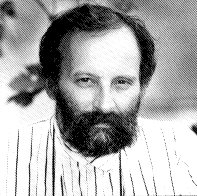
SERBAN STURDZA
(1947, Bucharest)
After graduating the Institute of Architecture "Ion Mincu" in Bucharest (1971) he settled in Timisoara. Fostered by the particular cultural climate of the city, his strong personality soon became the soul of the local architectural movement and the forerunner of the young architects there.
Mostly based upon a complex contextual approach, obstinately opposing the official discourse, the architectural drive he imposed in the early 70s in Timisoara was a singular position within the Romanian architectural landscape of the time, decisively marking the evolution of the architectural ideology in the local milieu (including the new school of architecture in Timisoara), and therefore the development of the city as well. Since 1991 he runs his own design studio, a fellowship more than an organisation, whose inner artistic morals refers to an ideal manner to make architecture, a sophisticated contextual approach with deep phenomenological roots.
The clue to the poetics of his design is the profoundly emphatic relation he keeps with the surrounding objects: any object is a thing (in the most Heideggerian sense) endowed with a form and a hidden meaning that could be apprehended, the form is a result of the meaningful communication between objects, and the whole, from a chair to the city, is a world of existential relations, of remotely and momentarily experienced facts. Hence, for him, there is neither empty space, nor unimportant object. This idiosyncratic cult of objects might explain three aspects of Sturdza's design: the endless jeweller-like work in the refining of any design, the mere "transfiguration" that the most common concrete object gets on his drawing board, and the unusual belief that architecture could convey the author's own emotions along with general human dramas.
The activity of the studio covers a wide range of studies: large urban projects, various new buildings, rehabilitation and remodelling of existing buildings and interior spaces, and also objects more or less connected to architecture, each design work becoming a silent yet touching manifesto reiterating the aim at preserving the cultural and existential quality of things - natural and manmade alike - and of their meaning.
Among them, the extension of the Timisoara Orphanage (1991) is a perfect illustration of Sturdza's understanding of the contextual nature of objects, linked to what generates an object together with what the object generates in its turn, which is the core of his ideas concerning the relation between the natural and the manmade. Thus, substantiated by the idea that "a not-built space is often more valuable than a built one", this project is one of the finest examples of organic architecture in Romania.